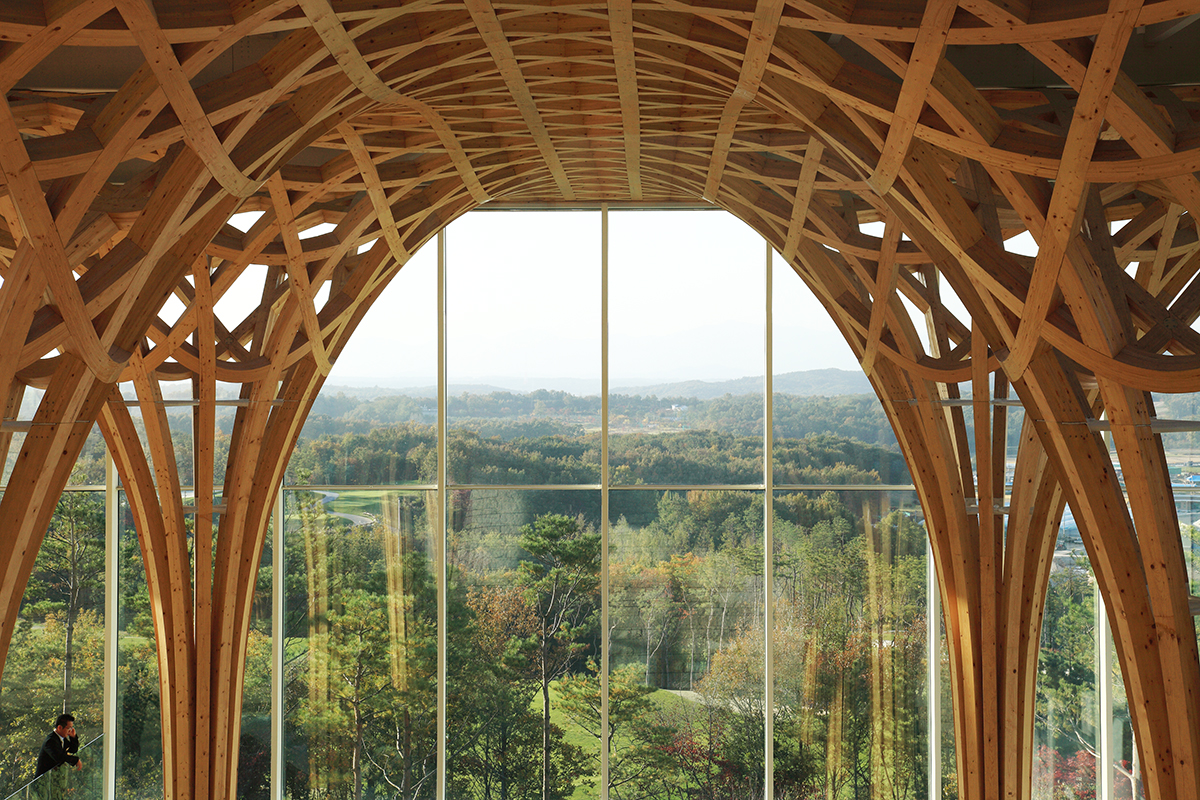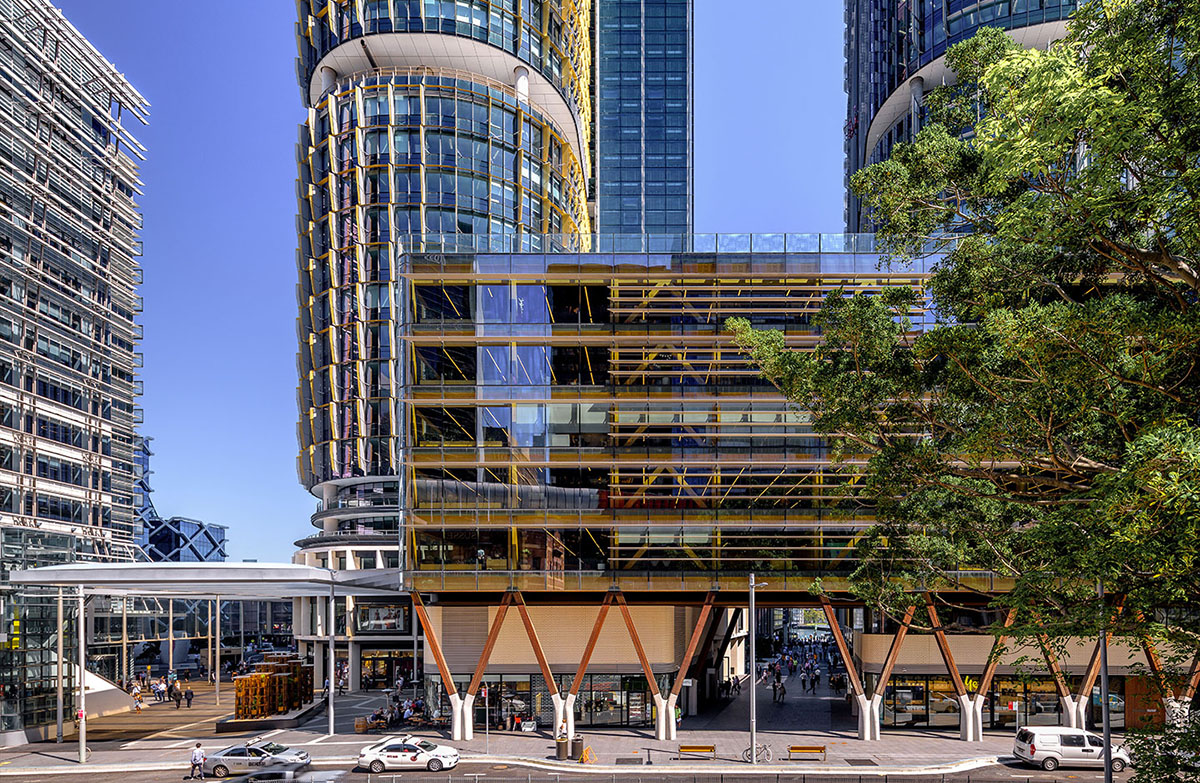Submitted by WA Contents
Australia launches a new $300 million Timber Building Program to encourage mass timber construction
Australia Architecture News - Feb 16, 2022 - 13:17 9754 views

The Australian government has launched a new $300 million program to encourage mass timber construction across the property sector, which aims to bring a new approach to achieve an economy-wide transition to net zero emissions.
The program, called the Timber Building Program, has been initiated by The Clean Energy Finance Corporation (CEFC), an organization investing $10 billion to Australia's clean energy sector on behalf of the Australian government, will support a new approach to substantially cut construction-related emissions, providing a greener alternative to conventional construction materials.
Aiming to transform Australia's green approach to construction, with this initiative, the CEFC is seeking to achieve an economy-wide transition to net zero emissions, each was announced on the CEFC's website.
 SHoP and BVN are designing the "world’s tallest hybrid timber building" for Atlassian in Sydney. Image courtesy of SHoP Architects and BVN
SHoP and BVN are designing the "world’s tallest hybrid timber building" for Atlassian in Sydney. Image courtesy of SHoP Architects and BVN
Timber Building Program allocates $300 million money for eligible projects
Through this new Timber Building Program, the $300 million money will be available in dept, financing for eligible projects Australia wide - including commercial offices, retail, industrial, healthcare and education.
Finance may also be available for multi-residential apartments, seniors living and student accommodation projects, but only concessional financing may be available under certain conditions.
"Timber has been used in construction for generations," said CEFC CEO Ian Learmonth in a press statement.
"Innovations in engineered wood products have created new opportunities for mass timber construction to be used in larger projects, creating the potential for immediate and long-term environmental benefits," Learmonth added.
According to Learmonth, this new initiative will also encourage new market developments, owners, developers, small-scale or large-scaled start-ups, aiming boosting the use of engineered wood products in the construction industry.
"Our new Timber Building Program will help finance this transition by encouraging owners, developers and builders to use lower carbon engineered wood products in their projects."
"The CEFC has a strong track record in financing new market developments, from large-scale solar to cleantech start-ups. We are excited to bring this expertise to sustainable construction," Learmonth concluded.
Reducing carbon emissions is an important part of the fight against climate change. Buildings are currently only responsible for 39 per cent of global energy-related carbon emissions, while 28 per cent is due only to operational emissions, that is, which needs to heat, cool or operate a building, according to World Green Building.
The remaining 11 per cent is caused by materials and construction. According to The CEFC, it is expected to account for almost half the emissions of new construction by 2050.

Kengo Kuma-designed The Exchange, a wooden community center in Sydney completed in 2020. Image © Martin Mischkulnig
Timber buildings can reduce embodied carbon up to 75 per cent
"Traditional steel, aluminium and cement production are among some of the more challenging materials to decarbonise and have been identified as an area of focus for emissions reduction under the Australian Government Low Emissions Technology Statement1," stated the CEFC in its website.
According to Australian buildings and infrastructure: Opportunities for cutting embodied carbon report, the CEFC emphasized that mass timber construction will play an important role in meeting this challenge.
With the use of timber in construction, it can reduce embodied carbon by up to 75 per cent compared to the use of conventional steel and concrete.
"The time is right for the development of more timber buildings across the property sector. By locking in mass timber construction in new projects, we can also help develop local skills and experience, supply chains and delivery capabilities, all of which can catalyse more timber-based building activity into the future," said CEFC Director of Property Investment Ryan Rathborne.
"We are already seeing early adopters incorporating these new materials in their construction. Our goal is to accelerate this trend, working with the property sector to create a cleaner, more sustainable built environment," Rathborne added.
As the CEFC explained, eligible projects will be considered on a case-by-case basis and may include those which: the project that use low carbon engineered wood products in large-scale construction, the projects having secured appropriate materials source, accreditation and embodied carbon outcomes, the projects that require $20 million-$75 million in CEFC debt finance.
In addition, it may include the projects that are commercially sound, reflecting the rigorous investment requirements of the CEFC and the project that comply with the CEFC Investment Policies, Guidelines and Risk Approach.

Tzannes-designed International House Sydney, a seven storey timber commercial building in Barangaroo, Sydney was completed in 2017. Image © The Guthrie Project
"Our property-related investment commitments have included demonstration projects with the ability to deliver best-in-class performance around energy efficiency, along with the effective integration of renewable energy into new and existing buildings," Rathborne added.
"Cutting emissions from embodied carbon is the next frontier for the construction sector, with enormous potential from development through to occupation."
Similar projects were already started to be applied in other countries, such the French government announced in 2020 that all new public buildings would be made of at least 50 per cent from wood or other sustainable materials from 2022.
The Canadian government has been running The Green Construction through Wood (GCWood) Program, which was initiated in budget 2017 with $39.8 million in funding available over four years - aimed to support projects and activities that increase the use of wood as a green building material.
According to the 2021 Mass Timber report, over 480 mass timber projects were completed or under construction since 2007.
The city of Amsterdam launched an agreement, called Green Deal Timber Construction, in 2021 to construct 20 per cent of all new housing projects with wood or biobased materials by 2025. The agreement was signed by 32 municipalities in the Metropolitan Region of Amsterdam (MRA) region.
Top image: Haesley Nine Bridges Golf Club House by Kyeongsik Yoon in South Korea won the WA Awards in the 6th Cycle of WA Awards. The project was completed in collaboration with Shigeru Ban.
> via CEFC
